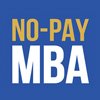My Intro to Accounting professor recently posted some demographic information from the course pre-enrollment survey. I find this data very interesting, so I’m sharing the highlights here.
|
Students enrolled:
|
127,569
|
|
Active students:
|
91,865
|
|
Number of students submitting homework:
|
28,951
|
|
Total discussion forum posts:
|
5,694
|
|
Number of students posting:
|
2,876
|
First, check out the number of students enrolled. Wow! Over 120,000 students. This course is really putting the MASSIVE into Massive Online Open Course. And of those, almost 92,000 are active – meaning that they are participating in the course in some form. Those roughly 29,000 submitting the homework are the ones I consider to be taking the course seriously – as previously mentioned, most people who sign up for MOOCs don’t finish them, or don’t participate fully.
Notice how many students are posting on the discussion boards. Around 3,000, with roughly two posts per person. My main frustration with online courses so far is how overwhelming the discussion boards are. I registered for emails from the International Study Group board, and my inbox was flooded. In this class, only a small fraction of the students are participating in the discussions, and it’s still totally swamped with comments.
|
Male:
|
|
54%
|
|
First MOOC:
|
|
53%
|
Roughly evenly divided male/female. And about half having previously enrolled in a MOOC.
Ages of students:
|
21 and under:
|
|
7%
|
|
22 – 30:
|
|
39%
|
|
31 – 40:
|
|
27%
|
|
41 – 50:
|
|
16%
|
|
51 – 60:
|
|
9%
|
|
61 and over:
|
|
4% (including 8 students over 90!)
|
I’m not sure I believe that there are 8 students over age 90 – that seems like a joke to me – but hey, it’s possible. Besides those 90-year-olds, it’s no surprise that the people taking these courses are generally post-college age. Since this method of education doesn’t have the same legitimacy as traditional university studies (yet), it makes sense that most people in the college age bracket who want to take college classes would be doing it at a regular college. The table below paints a similar picture.
Highest level of education
|
High school or below:
|
|
6%
|
|
College up to Bachelors’ Degree:
|
|
13%
|
|
Bachelors’ Degree:
|
|
44%
|
|
Masters’ or Professional Degree:
|
|
35%
|
|
PhD:
|
|
3%
|
I wonder if these numbers reflect the type of course; since accounting has such obvious real-world applications, it may be that more people who have already gone to college or graduate school are interested in picking up these skills, versus – I don’t know – Intro to English Literature.
Now here’s where it really gets interesting.
|
Number of Countries Represented:
|
|
188
|
Holy smokes! There are only about 190 countries in the world! (Plus or minus a few depending on how you count.) That means that almost every country in the world has a representative in this class. I wonder if there are others besides me who are taking the course from Rwanda.
Top Ten Countries
|
United States:
|
|
38%
|
|
India:
|
|
8%
|
|
Canada:
|
|
4%
|
|
Philippines:
|
|
2%
|
|
Spain :
|
|
2%
|
|
Australia:
|
|
2%
|
|
Russia:
|
|
2%
|
|
United Kingdom:
|
|
2%
|
|
Brazil:
|
|
2%
|
|
China:
|
|
2%
|
Yes, the plurality of students in the class are from the US, but it isn’t a majority. These stats on the international composition of the class highlight for me how useful MOOCs can be for students who don’t have access to an American university education.



